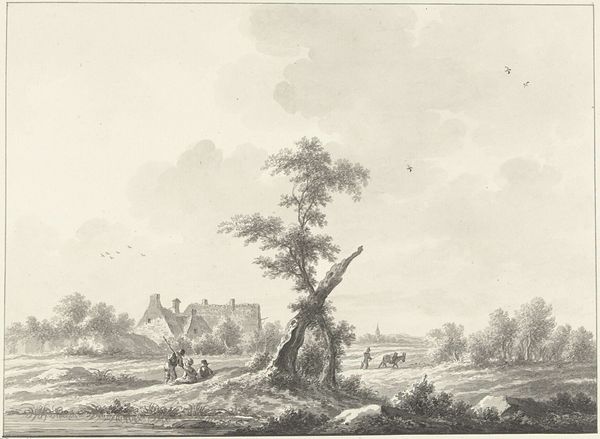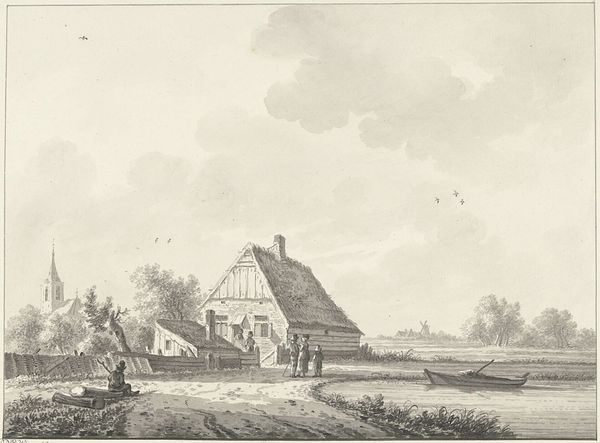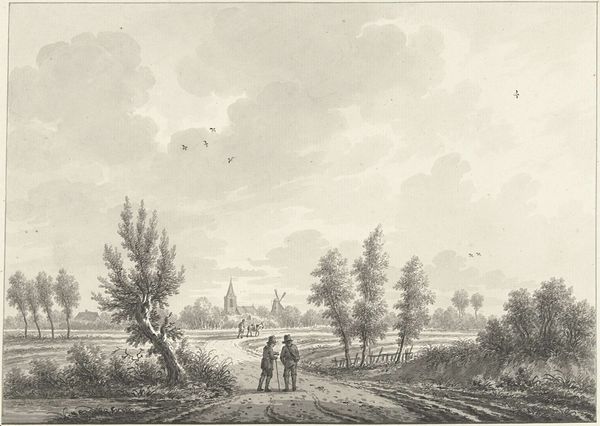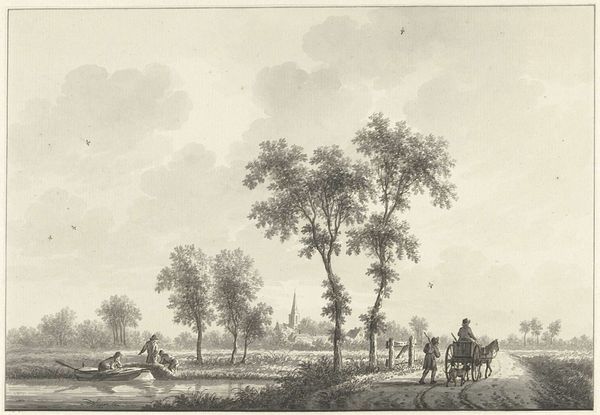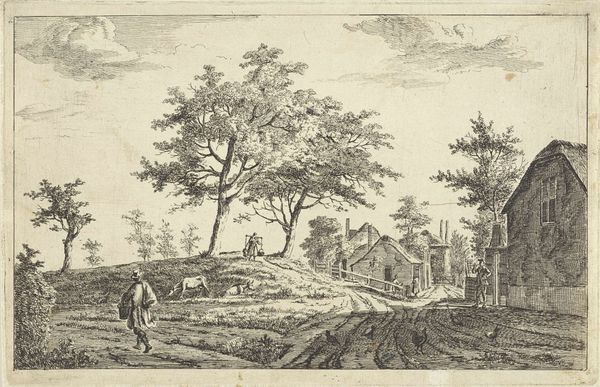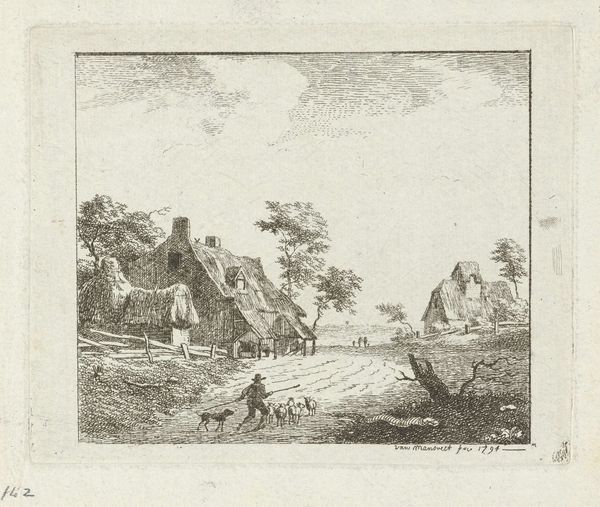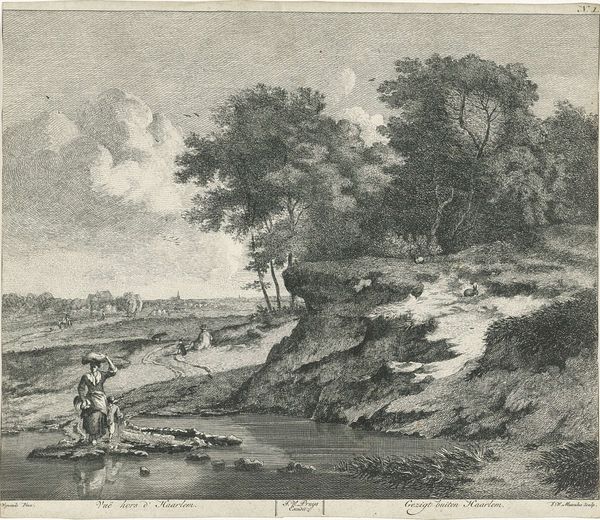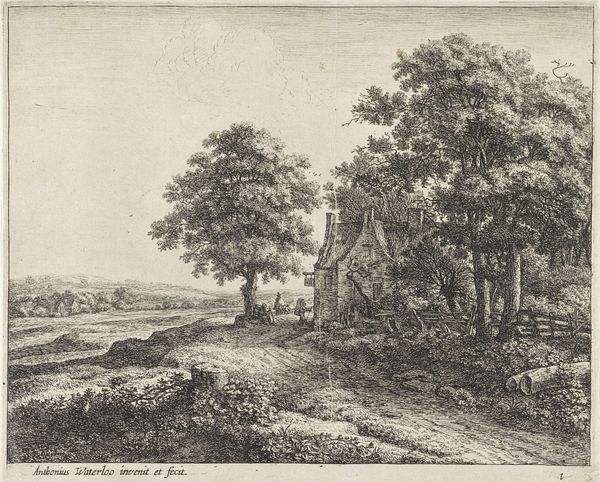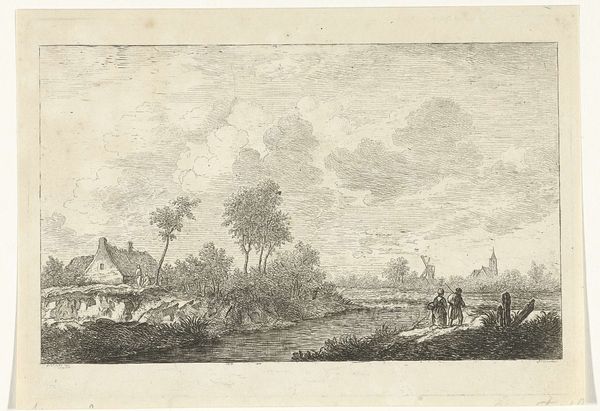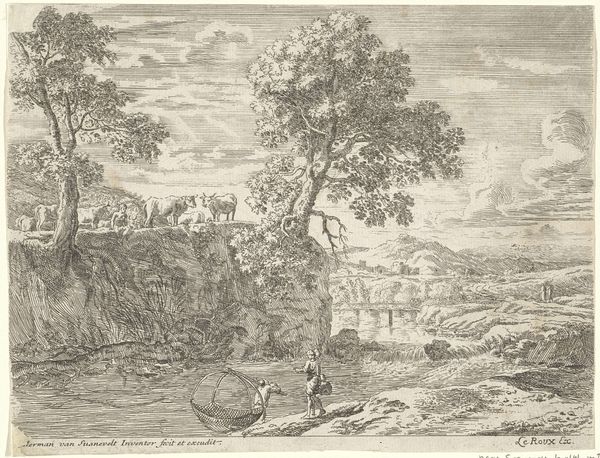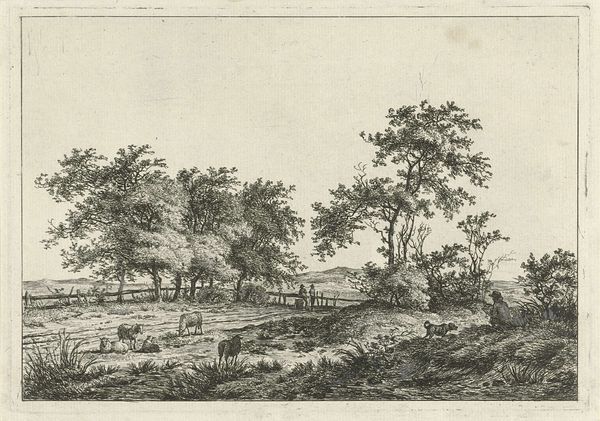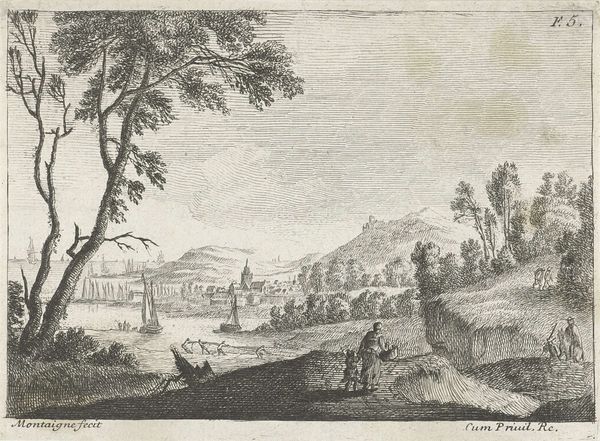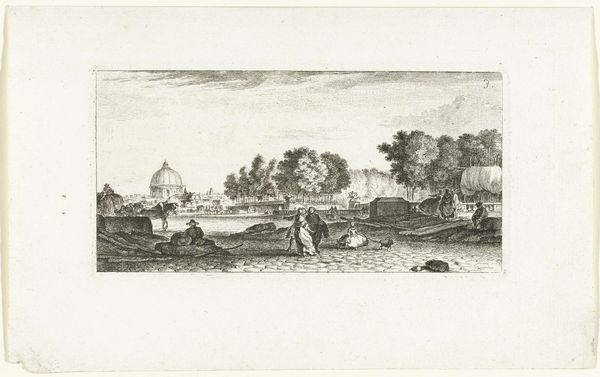
drawing, print, etching, paper, ink
#
drawing
#
neoclacissism
# print
#
etching
#
landscape
#
paper
#
ink
Dimensions: height 280 mm, width 398 mm, height 240 mm, width 327 mm
Copyright: Rijks Museum: Open Domain
Editor: This etching, titled "Het dorp Laren," made with ink on paper sometime between 1758 and 1815 by Nicolaas Wicart, feels incredibly serene, almost dreamlike. The soft grays create a real sense of peace. How do you interpret this work? Curator: This landscape provides an interesting window into the Dutch countryside during a period of significant socio-political shifts. Note how the artist depicts the village: relatively simple dwellings, people working, fitting in with a Neoclassical fascination for pastoral life that was emerging at the time. How do you think images like this contributed to shaping the urban population's ideas about rural life? Editor: It definitely seems idealized, a softened view. Maybe a bit romanticized, even? I can imagine people in the city craving this simpler existence. Curator: Exactly. Prints like these, often commissioned and circulated widely, influenced how the public perceived not just the landscape, but also the social order. Think about it: Whose interests were served by promoting this image of a tranquil, hard-working countryside, versus representing rural life more honestly? Editor: So, the apparent tranquility might mask some more complicated social dynamics? It's interesting to consider this as a carefully constructed image, not just a straightforward representation. Curator: Precisely. The artist’s choice to depict these scenes becomes part of a larger conversation about power, representation, and the idealization of rural life during a time of immense change. Editor: I hadn’t considered it in that light at all. Now, I see so much more than just a peaceful landscape. Curator: And that's precisely why understanding the historical context enriches our understanding of art.
Comments
No comments
Be the first to comment and join the conversation on the ultimate creative platform.
